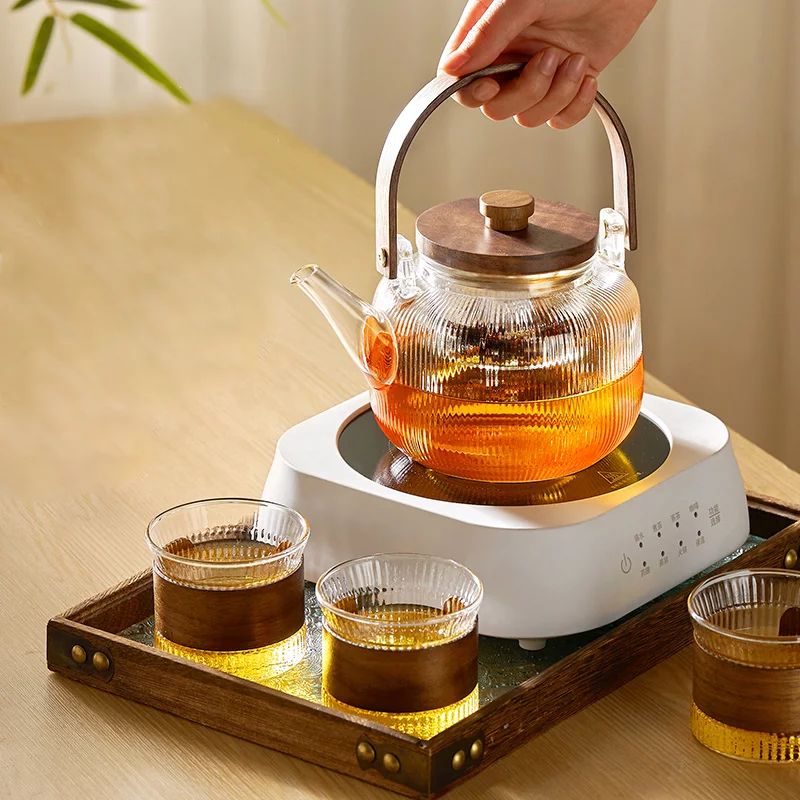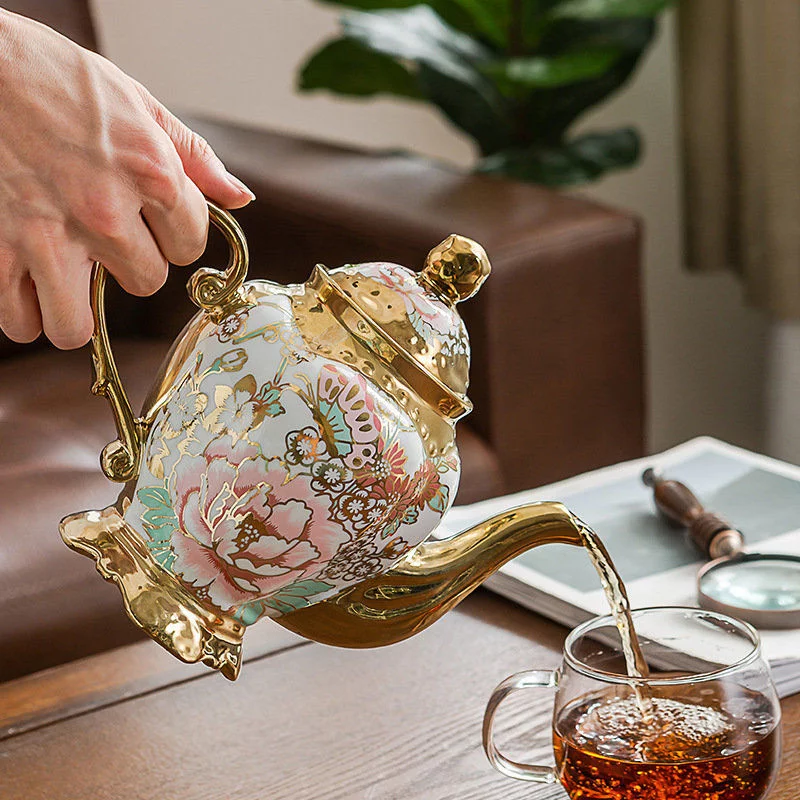Tea, with its rich history and diverse flavors, has been enjoyed by cultures around the world for centuries. While the quality of the tea leaves plays a significant role in brewing a perfect cup, the teapot used in the process is equally important. In this blog post, we delve into the art of tea brewing and explore the fascinating world of different teapot styles and techniques.

Teapot Styles:
Teapots come in various styles, each with its unique characteristics and origins. Let’s explore some of the most popular teapot styles and their distinct features:
- Chinese Yixing Teapots: Yixing teapots, crafted from purple clay, are renowned for their porous nature, which enhances the flavor and aroma of the tea over time. These teapots are often unglazed, allowing the natural clay to interact with the tea and develop a seasoned patina.
- Japanese Kyusu Teapots: Kyusu teapots, commonly used in Japanese tea ceremonies, are characterized by their side handle and built-in ceramic mesh strainer. The strainer effectively filters out tea leaves, resulting in a smooth and sediment-free brew.
- English Bone China Teapots: Bone china teapots, known for their delicate and translucent appearance, are a staple in English tea culture. They are typically adorned with elegant floral patterns and are favored for their ability to retain heat, ensuring a warm cup of tea throughout the serving.
- Moroccan Tea Glasses and Teapots: In Moroccan tea culture, ornate silver or brass teapots are used along with small tea glasses. The pouring technique, which involves raising the teapot high above the glasses, is an art form in itself and adds a touch of theatrics to the tea brewing process.

Teapot Techniques:
Apart from the various teapot styles, there are several techniques employed to brew tea, each designed to extract the optimal flavors from the leaves. Here are a few popular teapot techniques worth exploring:
- Gongfu Cha: Originating from China, Gongfu Cha is a traditional tea brewing method that focuses on precision and control. This technique involves multiple short steeping rounds, where the tea leaves are steeped for a brief duration in a small teapot, allowing the flavors to unfold gradually.
- Grandpa Style: Grandpa Style, popular in China, is a simple yet effective brewing technique. It involves adding tea leaves directly to a tall glass or teapot and continuously topping it up with hot water. As the leaves gradually unfurl, the flavors evolve, resulting in a multi-layered and enjoyable tea experience.
- Matcha Preparation: In Japanese tea ceremonies, matcha, a powdered green tea, is prepared using a special teapot called a chawan and a bamboo whisk. The tea is whisked vigorously in a back-and-forth motion, creating a frothy and vibrant cup of matcha.
- Russian Samovar Brewing: The Russian samovar, a traditional heated metal container, is often used for brewing tea. The tea leaves are placed in a small teapot or a metal infuser, which is then immersed in the samovar’s hot water, allowing the tea to steep slowly and infuse the water with rich flavors.
To ensure longevity and optimal performance of your teapot, proper care and maintenance are crucial. Here are some essential tips for teapot care:
- Cleaning: Most teapots should be washed with warm water and mild detergent. However, some teapots, such as Yixing clay teapots, should only be rinsed with hot water, as soap can seep into the clay and affect the tea’s flavor.
- Seasoning: For unglazed teapots like Yixing clay teapots, seasoning is recommended. This process involves steeping tea leaves in the teapot multiple times to enhance its porous nature and develop a unique flavor profile over time.
- Avoiding Thermal Shock: Rapid temperature changes can damage teapots. Avoid pouring boiling water directly into cold teapots, as this can cause cracking. Preheating the teapot with warm water before adding hot water is advisable.
- Storage: Store your teapot in a dry and well-ventilated place to prevent moisture buildup. Ensure that the teapot is completely dry before storing it to avoid mold or mildew formation.
Conclusion:

The art of tea brewing goes beyond steeping leaves in hot water. The teapot you choose and the techniques you employ play a significant role in unlocking the flavors and aromas of your favorite teas. Whether you opt for a Chinese Yixing teapot, a Japanese Kyusu, or any other style, understanding the intricacies of teapot styles and techniques allows you to fully appreciate the art and craft of brewing tea. So, grab your favorite teapot, experiment with different brewing techniques, and embark on a flavorful journey of tea exploration. Cheers!
